On the 14th January 1892, the country was stunned by news that HRH Prince Albert Victor, Duke of Clarence and Avondale, Queen Victoria’s grandson, and the heir presumptive to the throne, had died at Sandringham House, in Norfolk.
To make a modern comparison with today’s Royal family, Prince Albert Victor was the Prince William of his age.
The blow of his loss was made doubly severe because, not only had he just celebrated his 28th birthday, but he was also due to marry Princess Victoria Mary of Teck, and the nation as a whole was greatly looking forward to the upcoming Royal nuptials.
So, his death was keenly felt throughout the entire land, and it was proceeded by a huge outpouring of national grief.
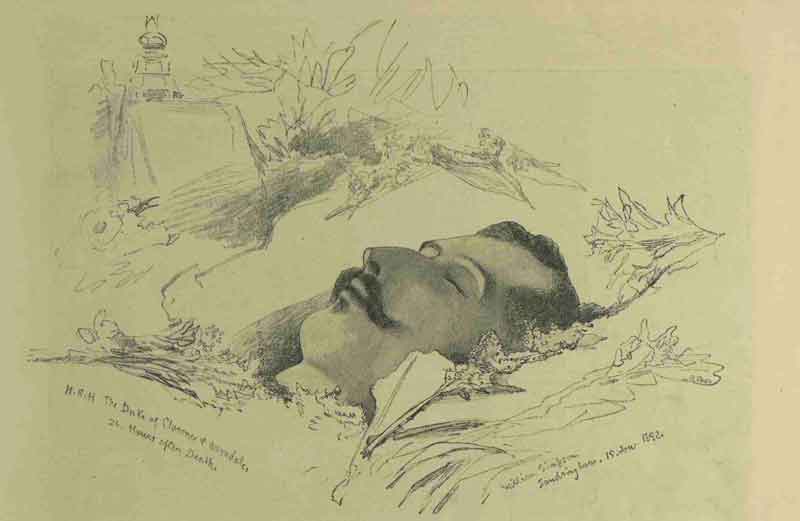
NEWSPAPER REPORTS
Ever since he had succumbed to the influenza epidemic that was sweeping the country at the time, the newspapers had been reporting on his condition to their readers, and, as it became apparent that his condition was worsening, crowds began gathering outside Sandringham House to await the bulletins that were being posted on the gates with news of his state of health.
His death occurred at 9. 15am; and when the news of his death was made public a tide of universal grief, together with a huge amount of sympathy for the Royal family, swept through all classes of society, and through many countries throughout Europe.
The universal outpouring of grief was both genuine and heartfelt; and there can be no doubt that “Prince Eddie”, as his was often referred to as, had been a popular member of the Royal family, whose pleasant and amiable disposition had endeared him to the whole country.
As the people of Britain prepared for the national mourning, the newspapers began looking back on his short life, his public service, and the illness that had killed him.
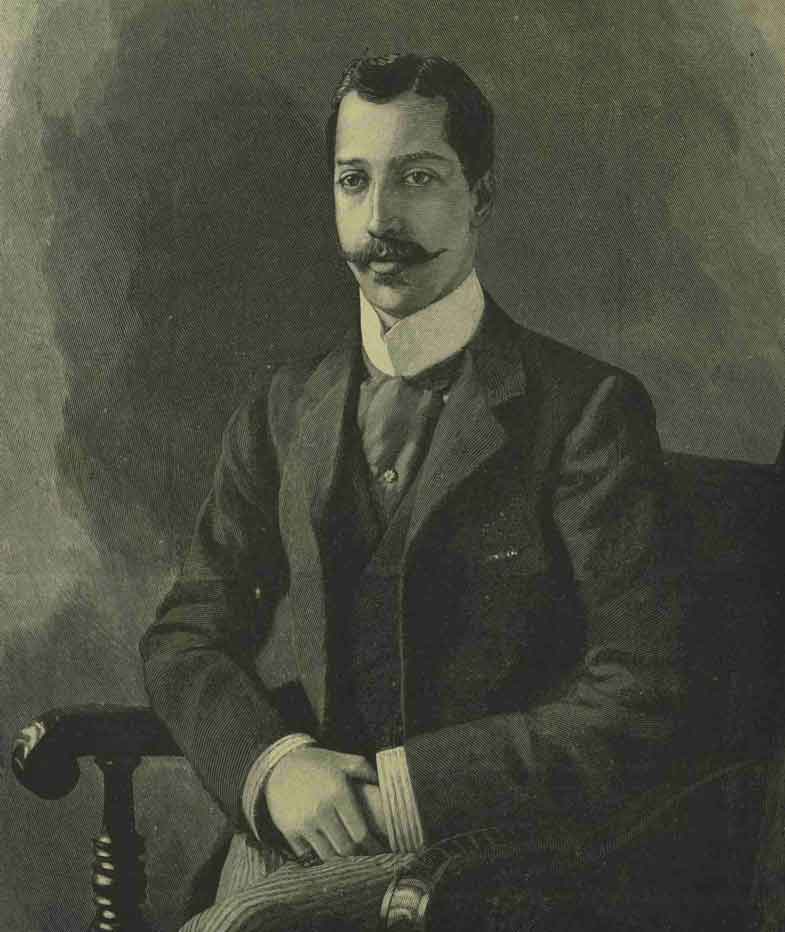
DEATH OF THE DUKE OF CLARENCE
On the 15th January 1892, the newspapers were awash with tributes to the dead Prince, and many of them were also reporting on his final days, as well as the effect that the news of his death had had on members of his family.
The Western Gazette, in its issue of Friday the 15th of January 1892, contained the following report on the loss:-
“The death of the Duke of Clarence plunges millions of all ages, classes, and races in this kingdom, and far beyond its limits, into a sorrow of profound acuteness, and into the keenest sympathy with the Prince and Princess of Wales, the Princess May, and every member of the Royal House, who at this hour are so sorely stricken.
The suddenness of it, the sadness of it, the pity of it – this speedy death of “Prince EDDIE.”
The circumstances attending it render the blow doubly shocking and harrowing.
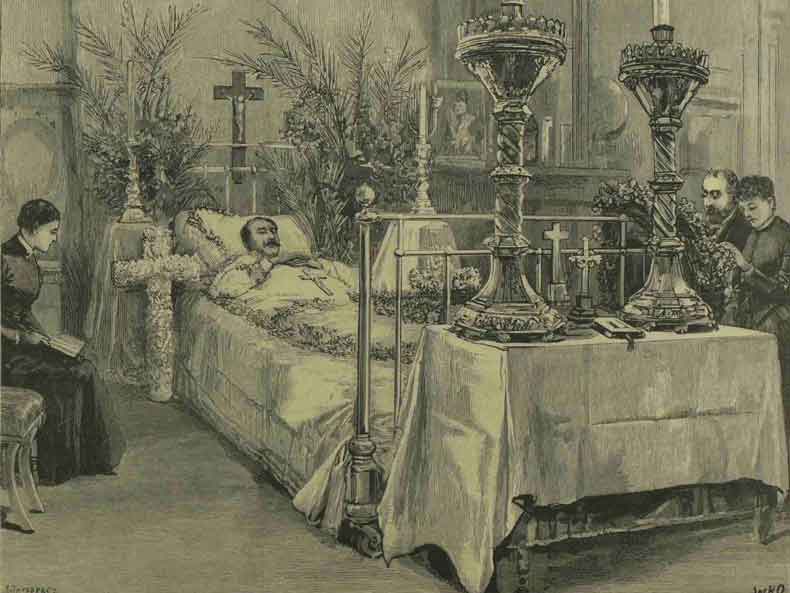
THE BRIGHT HOPE OF THE NATION
The young Prince, next after his father in succession to the Throne, was not only the bright hope of his household, but his excellent qualities, which led no single word of ill to be ever spoken of him; his unfailing amiability, which conciliated the good feeling of all around him; his ready and dutiful acquiescence in the wishes of his parents, which made him beloved in the family circle; and the well-known loyalty of affection, which kept him steadfast to the love of his boyhood – these characteristics brought him to be regarded as the bright hope of the whole British nation.

UNIVERSAL MOURNING
How deeply lovable qualities sink into the mind of the people has been seen in the eager anxiety with which crowds of rich and poor waited for the medical bulletins, in the regret displayed at their gravity, and in the grief with which every human heart in the kingdom worthy of the name has been wrung by the great trial inflicted by the young Duke’s death.
HIS BIRTHDAY AND IMPENDING MARRIAGE
He had but just passed, and celebrated at Sandringham, the twenty-eighth anniversary of his birthday, and scarcely more than another month was to have seen him united to a charming wife amid the joy of all English men and women.
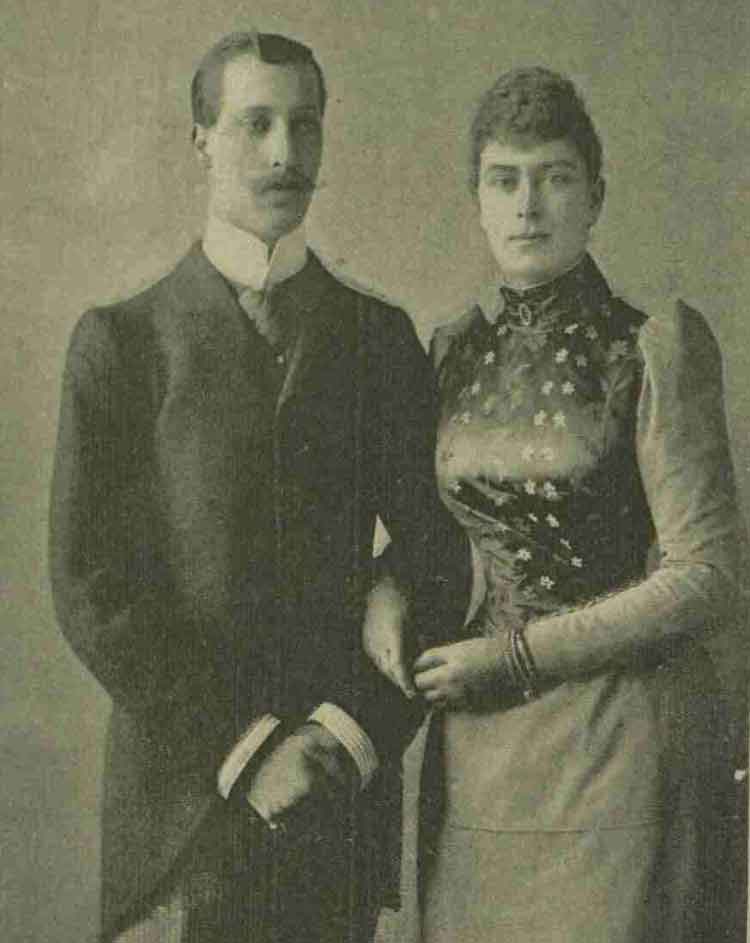
A RUTHLESS AND BITTER END
However, death has, sad to say, made a ruthless and a bitter end of these anticipations for the future, and has cut short the promise of a brilliant and happy life – to the pain of the community, and, it may be feared, to the long-felt agony of his near Royal relatives, the strength and sacredness of whose domestic ties have always ranked among the many signal virtues which render them loved and prized throughout our own and, and venerated in every other.”
DEATH OF THE DUKE OF CLARENCE
PROFOUND SORROW THROUGHOUT THE COUNTRY
The Western Gazette, in a separate article, went on to give details of how the Duke of Clarence may have caught the flu that was to kill him, and went into more detail about his final days.
“The startling news of the death of the Duke of Clarence was received in London between nine and ten o’clock yesterday (Thursday) morning, and occasioned a great shock of sorrow throughout the length and breadth of the land.
It had been believed all along that there was a ray of hope that the Duke would recover, but this was ruthlessly dashed to the ground, and the most profound sympathy is expressed for the Royal Family, and especially for Princess May, for whom none but the tenderest condolences are expressed.
The Press Association’s special correspondent at Sandringham states that on enquiry at Sandringham House at eight o’clock yesterday (Thursday) morning, he was informed that there was no unfavourable change in the Duke’s condition.
A later telegram, however, stated that the Duke of Clarence breathed his last between nine and ten o’clock in the morning.
Nothing was posted at the gates, but the porter was directed to inform enquirers that “all was over.”
News of the Duke’s death reached Marlborough House at 9.55 in the morning, and spread rapidly throughout London.
The Sandringham wire, announcing the sad event, was signed by Sir Dighton Probyn, who also telegraphed to Lord Colville, of Culross, stating that the death occurred at 9.15.
The blinds at Windsor Castle are drawn, and the shops in the Royal borough partially closed.
AN UPDATE LONDON, 2 P. M.
The Press Association’s special correspondent at Sandringham states that the official bulletin announcing the Duke’s death had not been posted there at 11.45.
The Duke of Connaught arrived at Portsmouth, from Osborne, about noon.
The Royal yacht Albert, and numerous vessels in Portsmouth harbour hoisted flags half-mast high.
The Home Secretary has cancelled an engagement in Birmingham in consequence of the Prince’s death.
Blinds are drawn at Marlborough House, St James’s Palace, and at the houses in Pall Mall, Westminster.
The Abbey bell was tolled.
RECEPTION OF THE NEWS BY THE QUEEN
The news of the Duke of Clarence’s death was broken gently to the Queen, and it is a satisfaction to know that the great shock has not seriously affected her health.
The Court goes into full mourning for three months.
The funeral will take place at St. George’s, Windsor.
The Lord Mayor of London telegraphed deep and respectful sympathy to the Prince of Wales.
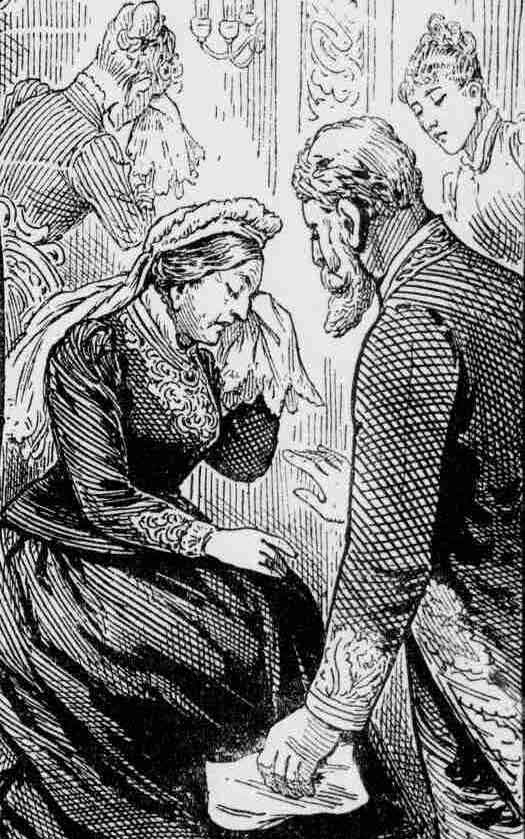
SYMPTOMS OF GREAT GRAVITY
The bulletin issued at Sandringham on Wednesday morning stated that symptoms of great gravity had supervened in the condition of the Duke of Clarence.
At midday the physicians reported that there was no change in the condition of His Royal Highness, and at twenty minutes to nine on Wednesday night they stated that there was no abatement in the unfavourable symptoms, and that the condition of the Duke gave cause for grave anxiety, although his strength was well maintained.
DEEP CONCERN FROM ALL CLASSES
When the news of the critical state of the Duke became known, the deepest concern was manifested by all classes of the public, and expressions of sympathy were uttered at various gatherings.
Telegrams show that the same sympathy and concern are felt on the Continent.
Among the numerous callers at Marlborough House, to learn the condition of the Duke, were the Turkish, French, German, Austrian, Italian, and Russian Ambassadors.
During the afternoon the number of callers was so great that a queue was formed to the lodge where the book lay for signatures, and after signing the callers passed out by another entrance.
THE LONG HOURS OF THE NIGHT
The hope expressed by the Duke’s medical attendants on Tuesday night’s bulletin unhappily proved to be of too sanguine a character, for late in the evening the Royal patient’s condition became so serious that scarcely a member of the party staying at Sandringham House took any rest.
During the long hours of the night the Princess of Wales remained by the bedside of her eldest son, whose critical condition was plainly shown by the great rise of his temperature and pulse.
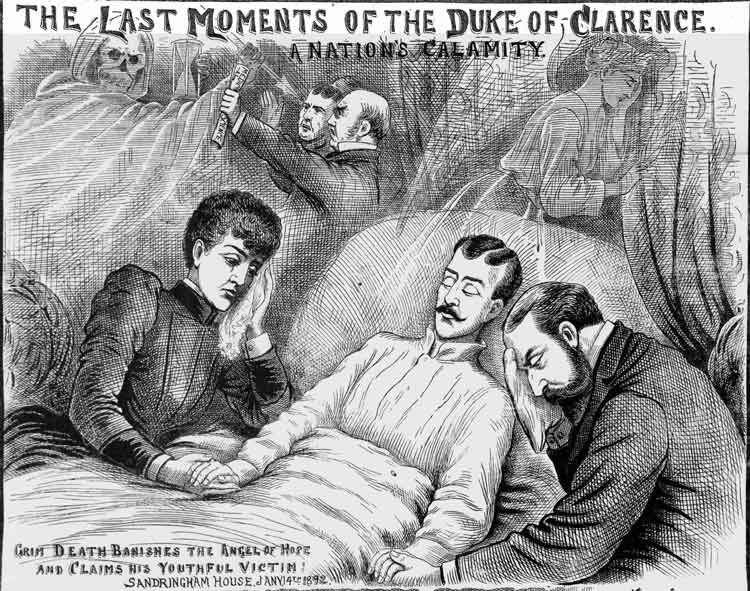
A SUDDEN CHANGE
The sudden change in the Duke, indeed, struck everyone with dismay, and the whole household were filled with the most dismal forebodings; but it was not until after most careful consideration that Wednesday morning’s alarming bulletin was telegraphed far and near, giving the true state of the case.
The fact that this bulletin was not signed by Dr. Manby is attributed to the circumstance that it was issued at an earlier hour than was originally intended, Dr. Manby arriving at the house just before the bulletin was posted at the gates.
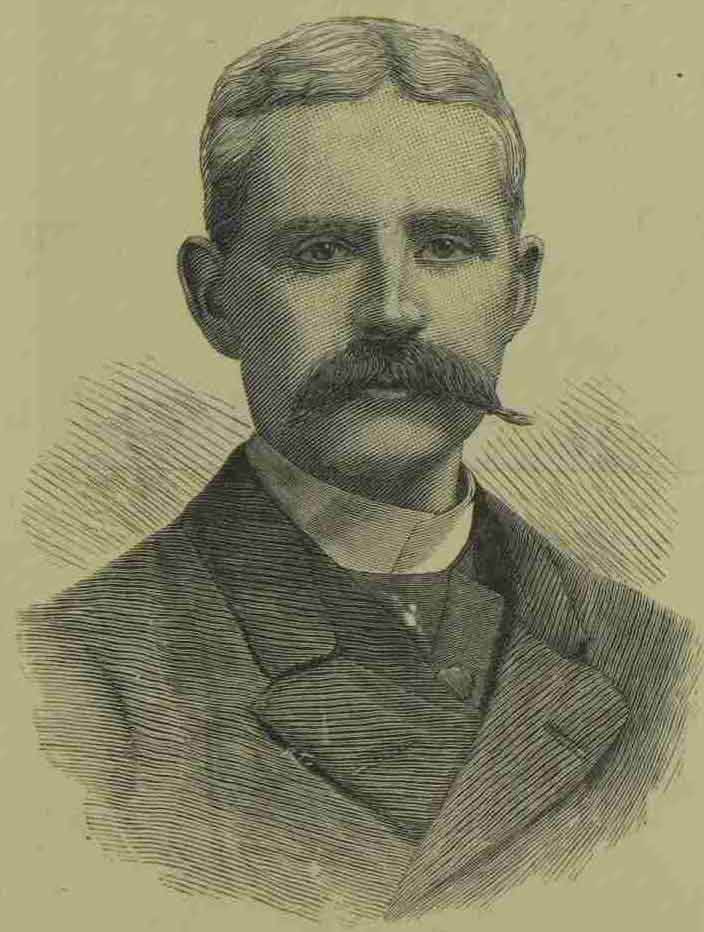
AS BAD AS HE CAN BE
Fervent hopes were expressed that better news might be contained in the promised further statement, and throughout the whole morning little knots of people, anxious to hear a word from those inside, lingered about the various entrances to the park; but the only indication of the distinguished patient’s condition found expression in one remark – “He’s as bad as he can be.”
It may he taken for granted that the Duke’s illness has really lasted seven days, ending at noon on Wednesday, when the crisis was considered to be near at hand, and, as the minutes crept on, people in the vicinity of the gates increased in numbers.
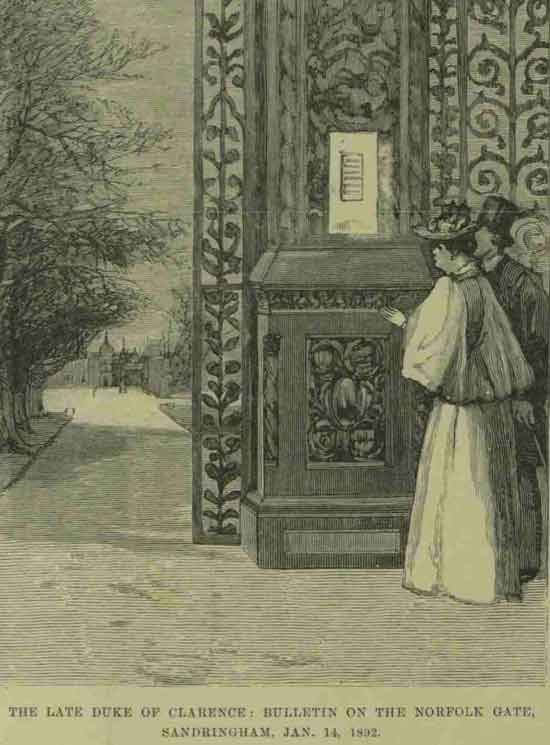
APPEARANCE BY THE FAMILY
They appeared to be waiting for the worst; but about one o’clock the Prince of Wales himself left the house, and paced for a few minutes up and down the path leading to the Norfolk Gate, and the appearance of His Royal Highness was regarded as an indication that at any rate his son was no worse.
Strength was given to this hope by the appearance, a little later in the open air for a few minutes, of Princess Victoria and Prince George of Wales.

NO CHANGE IN HIS CONDITION
Then came the second bulletin, recording no change in the Duke of Clarence’s condition, and there was a feeling of relief that the report was, at least, not less favourable than its forerunner.
But the hopes indulged in were dissipated when the last, most serious, of the bulletins was issued shortly before nine o’clock.
THE ORIGIN OF THE DUKE’S ILLNESS
There is some reason to fear that his illness was induced by sudden exposure to the severe weather experienced at the funeral of the late Prince Victor of Hohenlohe, which took place on Monday week.
A keen northerly wind swept across the burial ground while the committal prayers were being read by the Bishop of Rochester, and although the Princes were warmly wrapped in fur-lined coats, it was evident that they and the other mourners, as they stood bareheaded near the grave, suffered acutely from the severe cold to which they were exposed.
The Duke of Clarence and the other Princes had to undergo considerable fatigue on proceeding to and returning from the funeral.
Their Royal Highnesses had hurried from the Metropolis by special train, and returned as speedily in the same manner to London, quitting the Metropolis shortly after their arrival for Sandringham.
A shooting party was made up at Sandringham House on Wednesday morning, January 6th, and having shot several coverts, the Royal party, which included the Prince of Wales and both his sons, finished up prior to luncheon in the copse which lies at the farther side of Wolferton Station.
HE WAS FEELING CHILLY
Luncheon was served in the Prince’s cosy private room at the station, and, during the meal, the Duke of Clarence complained of feeling chilly.
It was evident that he had contracted a slight cold, but he had treated the matter lightly, and insisted upon finishing the day’s sport.
At the end of the day he again complained of cold, and, instead of joining the majority of the party, who drove back to the house in a drag, the Duke started to walk home in order to get warm, the distance being about two and a half miles.
He dined with his father and the family, but was not at all well, and retired early.
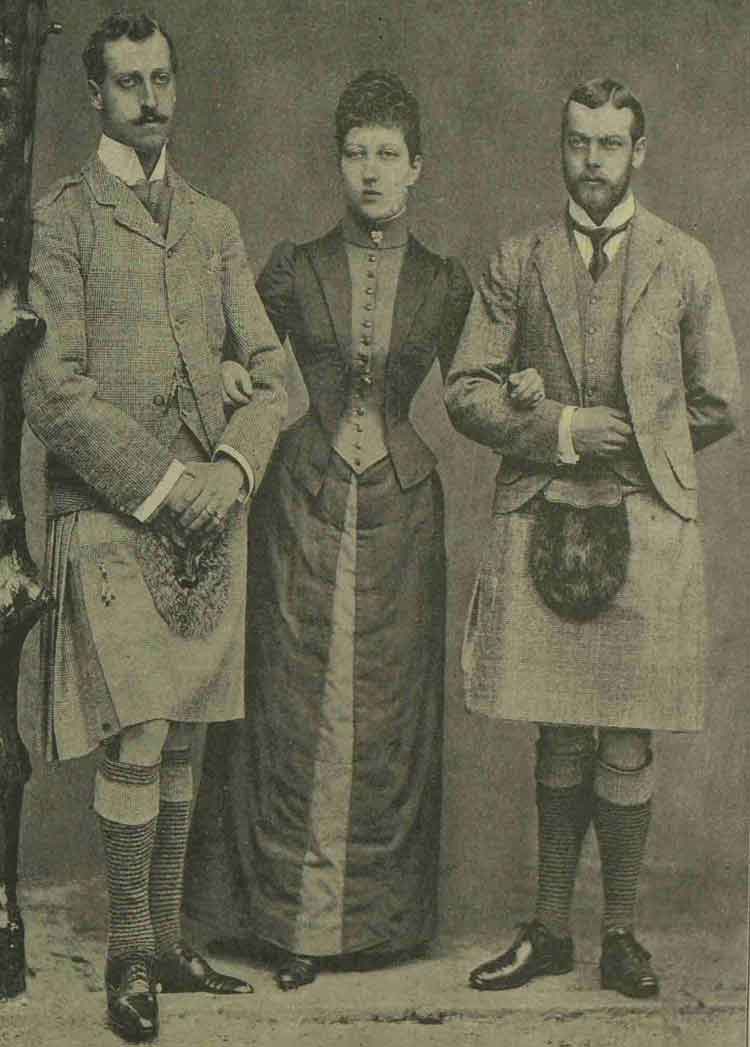
STILL ILL THE NEXT DAY
The next morning he accompanied the shooting party again, and shot over Woodcock Wood, luncheon being served at Park House, the residence of Sir Dighton Probyn, Comptroller of the Household, which is just outside the park walls.
The Duke was unable to proceed further, however, and walked quickly back to Sandringham House with Princess Victoria, followed shortly afterwards by the Duke and Duchess of Teck.
That evening His Royal Highness appeared at dinner, but only remained a short time in the dining-room, taking to his bed at half-past eight.
IN GOOD SPIRITS
On Friday he was in good spirits, but was confined to his room, and although strongly desirous of being present at the dinner party in honour of his birthday, he yielded to advice and remained upstairs.
DOCTOR LAKING SENT FOR
On Saturday it was found that he was seriously ill, and Dr. Laking was sent for from London.

DOCTOR BROADBENT SUMMONED
That gentleman’s report was so disquieting that Dr. Broadbent was summoned on Sunday, and both have since been by the Royal bedside, barely taking time for meals.
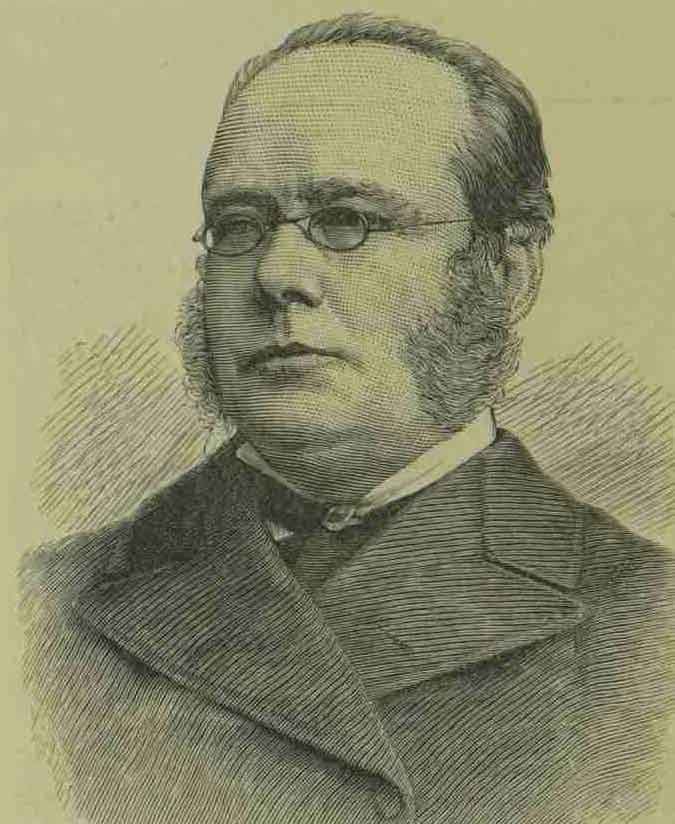
HIS WEDDING DAY WAS CLOSE
At any time the Duke’s dangerous condition would have caused the gravest apprehension and sorrow, but the misfortune was now emphasised by the fact that the appointed wedding-day of the Duke with Princess Victoria of Teck was so near at hand, and that preparations were still being made throughout the country to celebrate the happy event.

A HOPEFUL INDICATION
One hopeful indication that the Duke might rally from his critical condition was found in the fact that up to Tuesday night it was one lung only which was severely affected.
Another good sign was the absence of any mention of increasing weakness.
The Duke of Clarence was less robust than his brother, Prince George, but the Duke had an ordinarily strong constitution, and up to a week ago was perfectly sound in health.
Between the age of twelve and sixteen the Duke grew out of all proportion to his younger brother, and this may possibly have weakened him.
The Duke had the best medical attention.
Dr. Broadbent brought to bear on the case his extensive knowledge and practice among fever patients at St. Mary’s Hospital, and Dr. Laking has known the temperament and little ailments of the Duke since he was an infant. He had, in fact, been in almost daily contact with his patient, and, therefore, was at great advantage in watching him at his hour of deepest need.
The Duke was nursed by Sister Victoria (Miss Hallam) assisted by the Princess of Wales and Princess Victoria of Teck.
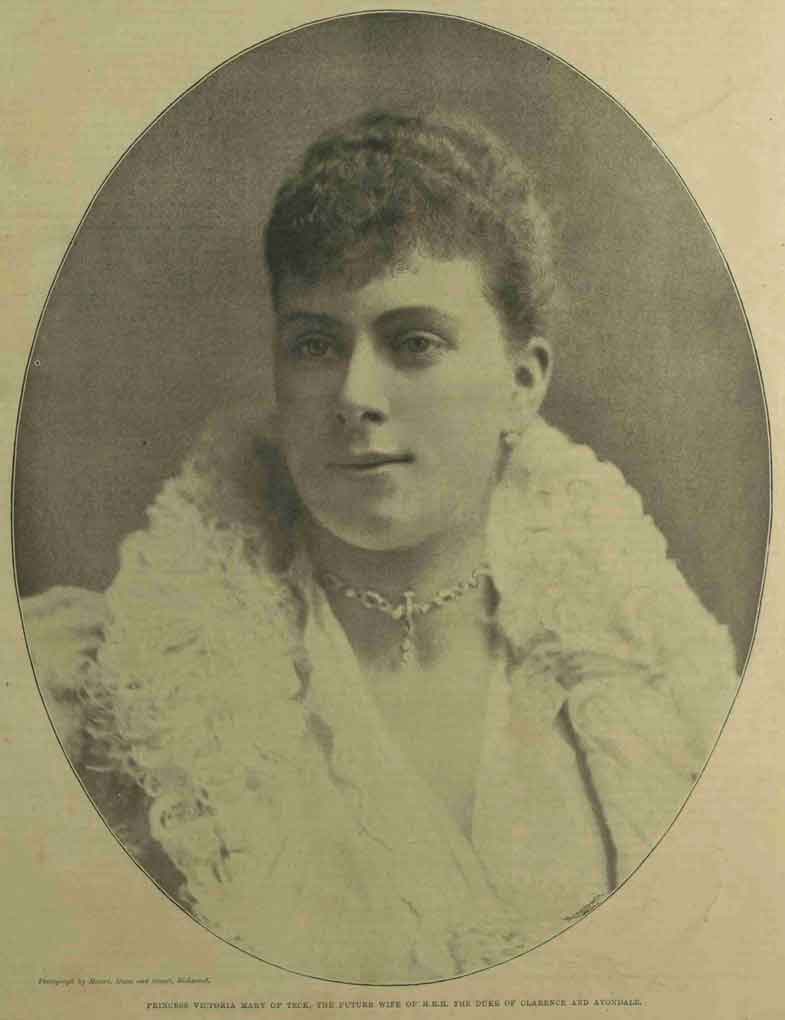
AN OUTPOURING OF SYMPATHY
Since the Prince of Wales’s life was given over at Sandringham twenty years ago, during his attack of typhoid fever, there has not been in London such a general outpouring of sympathy as was witnessed on Wednesday.
A visit to Marlborough House any time during the day showed that Statesmen, Ambassadors, Peers, Members of the House of Commons, civil servants, military and naval men, and people belonging to the working classes were alike imbued with a desire to know the latest news, and to show their good feeling towards the Royal Family.
THE PRINCE’S CAREER
It is barely seven years since the dead Prince performed his first public function, and his brief public career was one of considerable promise.
In 1877 he entered the navy as a cadet, and received two years’ training on board H.M.S. Britannia at Dartmouth.
In 1879 he made a voyage to the West Indies, and in the succeeding two years, in company with Prince George, he made other voyages to various parts of the world.
When they were at the Cape, the two Princes paid a visit to the late King Cetewayo, and afterwards visited the Mikado of Japan at Tokio.
In 1883 the Duke entered at Trinity College, Cambridge, and in the same year several honorary offices were conferred upon him.
Among the congratulations the Prince received on attaining his majority, there were addresses from all parts of the country and letters from public men of all political opinions, Mr. Gladstone writing a letter of courteous advice, which was feelingly acknowledged by the Prince in a letter of more than usual length.
The numerous and brilliant public functions in which the Prince took part since attaining his majority included his initiation as a Freeman of the City of Landon and the opening of a new dock at Belfast.
His splendid visit to India will lie still fresh in the public memory, as will also be his visit to Ireland, when he unexpectedly paid a visit to the grave of the late Mr. Parnell.
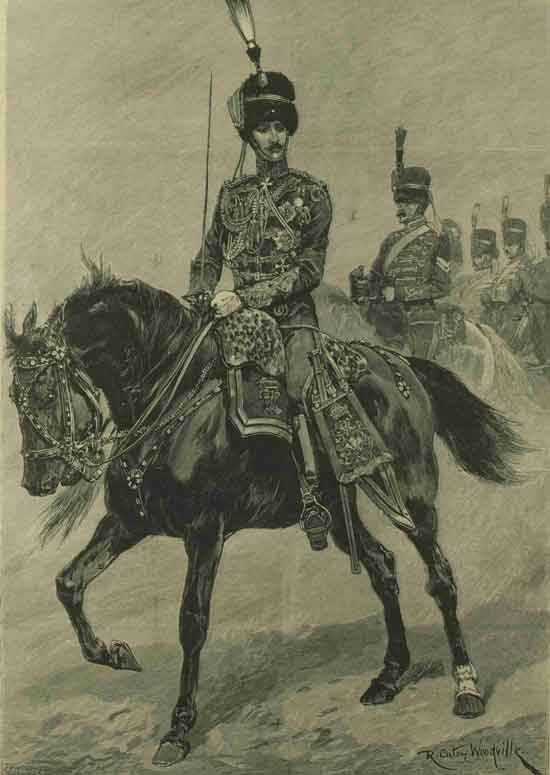
OPINIONS OF THE PRESS
The Globe says that from the cottages of the poor as from the mansions of the rich will spontaneously flow a universal tide of the deepest and most sincere sympathy with the Royal Family.
There is no more pathetic event in the Royal annals of England than this sudden snatching away of the promising young Prince, who stood in the direct line of succession to the Throne.
Under any circumstances, it must have weighed down the minds of Her Majesty’s subjects with heavy grief.
It seems, The Globe continues, almost impossible to believe that the joy bells which would have been heard throughout the Empire on the wedding day of the Prince are already doomed to silence.
To the Queen the cruel blow must needs be very heavy.
It will revive and give fresh poignancy to her inappeasable grief for the loss of the deceased Prince’s grandfather, and cannot fail to cloud the rest of her life with added darkness.
But it is, perhaps, to the Princess May that the national mind and heart will chiefly go out in spontaneous pity and profound sympathy.”
A GENUINE LOSS
There can be little doubt that the loss of Prince Albert Victor was seen as a huge loss to the country, and, of course to his family.
His mother, Alexandra, Princess of Wales, never got over his death and she is said to have kept his unchanged room as a shrine to his memory.
The Prince is buried in the Albert Memorial Chapel, close to St George’s Chapel, Windsor Castle.
At his funeral, his bride-to-be, Prince Victoria Mary of Teck, laid what would have been her bridal wreath of orange blossom on his coffin.
She would, in 1893, marry his brother Prince George, who took Prince Eddie’s place in the line of succession, duly becoming King George V in 1910.
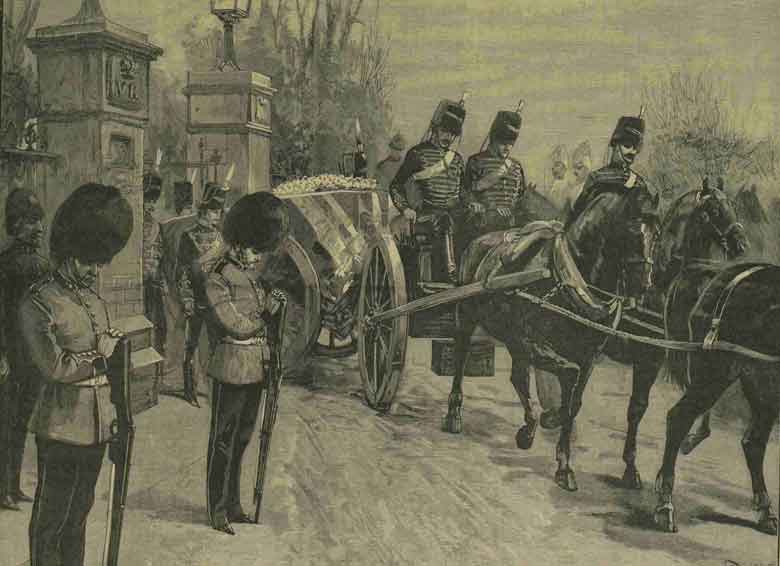
A JACK THE RIPPER SUSPECT
Today, the name of Prince Albert Victor, Duke of Clarence and Avondale, tends to mostly crop up in relation to some of the more absurd theories on Jack the Ripper.
He has appeared as both a suspect and as the epicentre of a Masonic web of intrigue.
He most certainly, and emphatically, was not Jack the Ripper, and the ridiculous Masonic theory is, on the whole, dismissed by serious scholars, who see it for what it is, absolute nonsense.
A GENUINELY NICE PERSON
The real Prince Albert Victor, by contrast, appears to have been a thoroughly nice and charming person, whose lack of haughtiness, and overall likeability, was commented on by many who met him.
His loss was felt all over the country, and by all classes, and we’ll never know what would have happened, or how different history would have been, had influenza not claimed the life of the King that never was on the 14th of January 1892.
